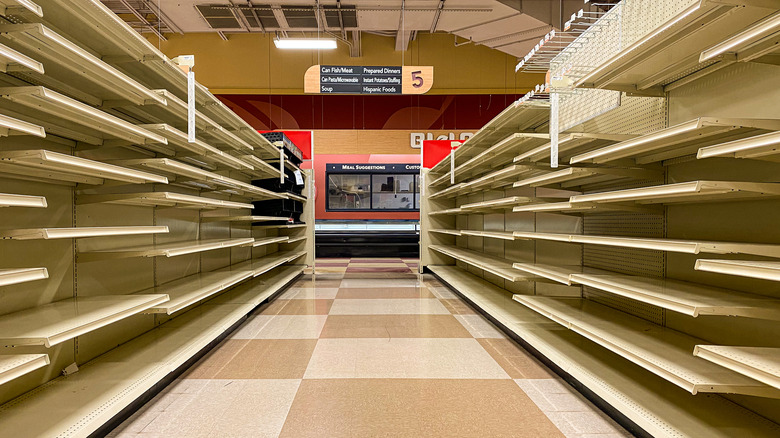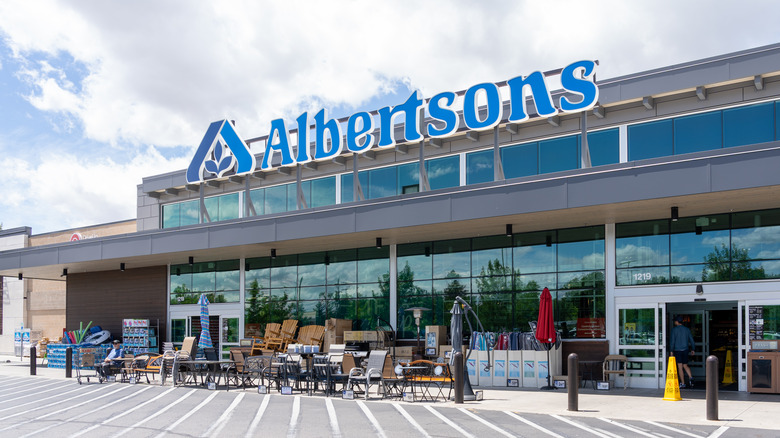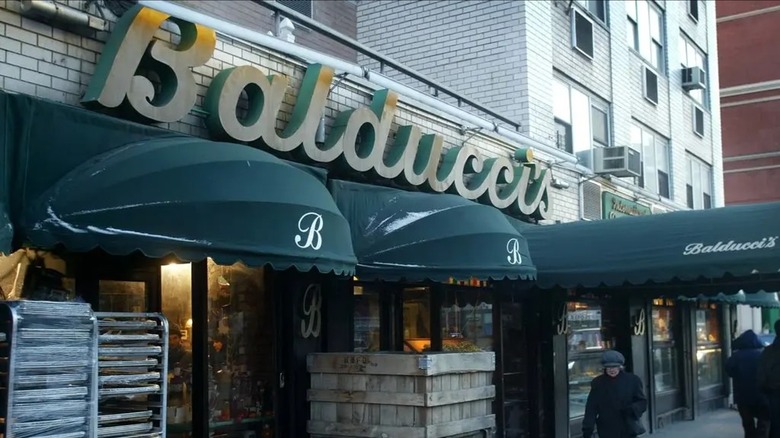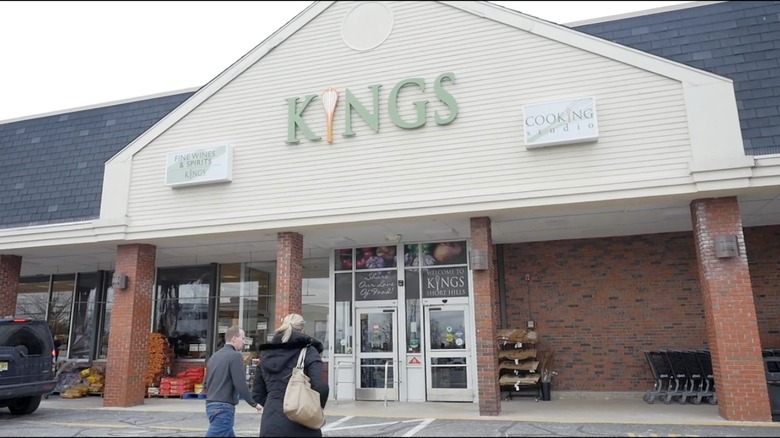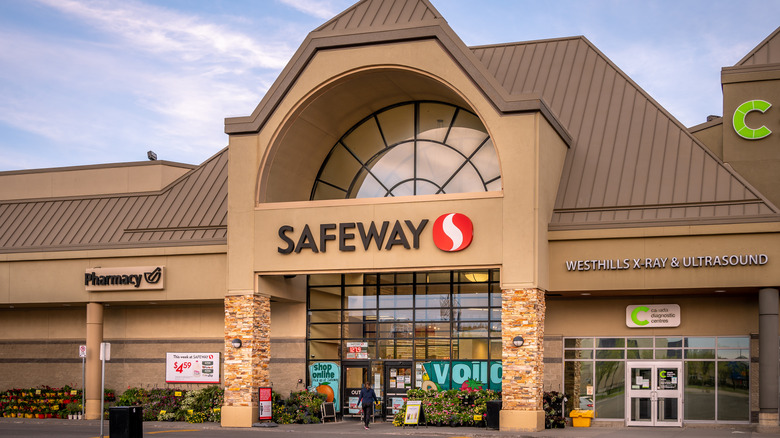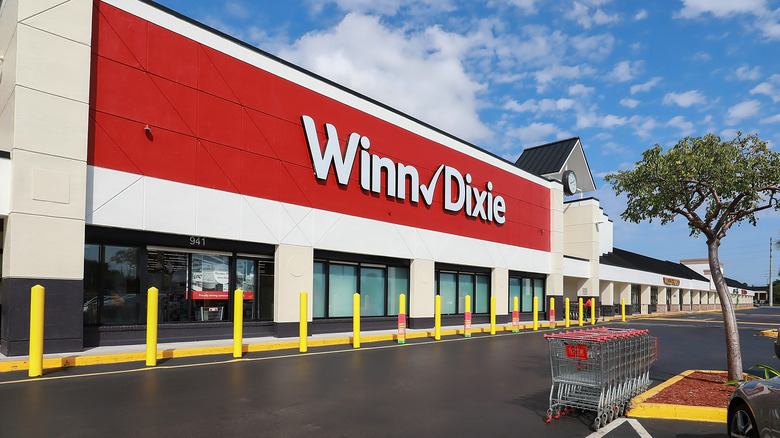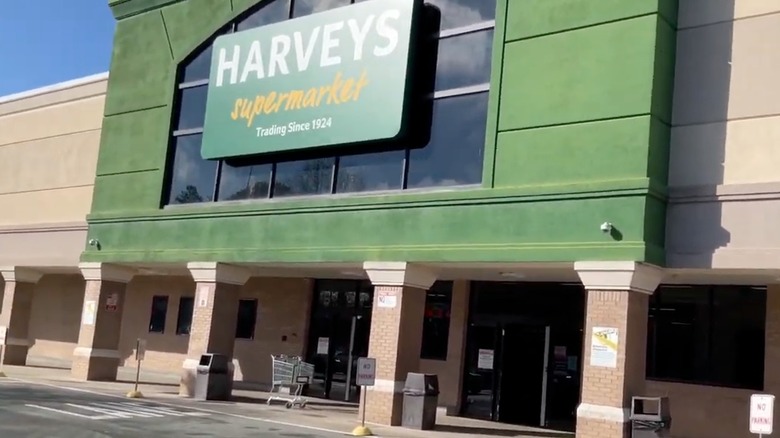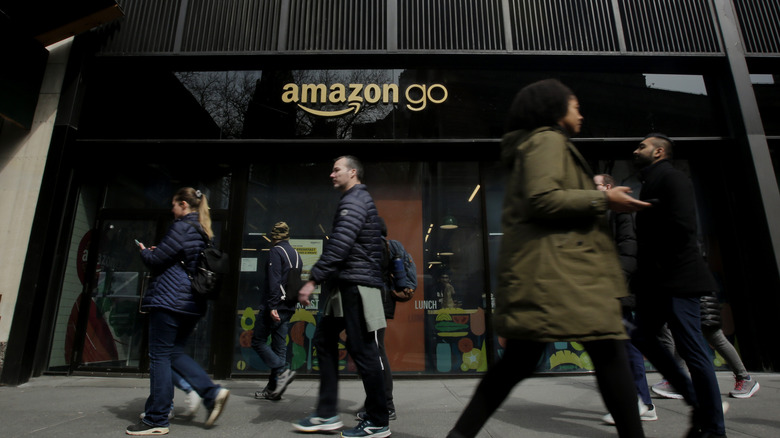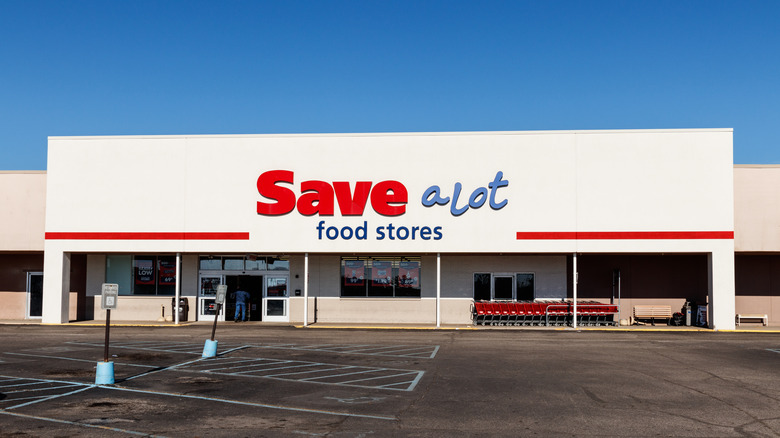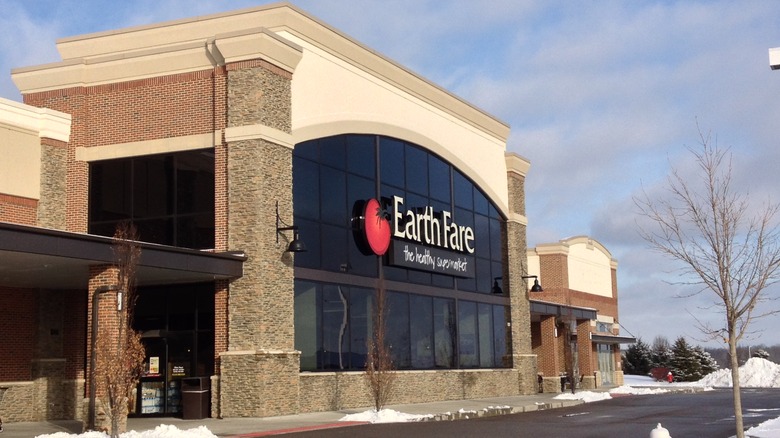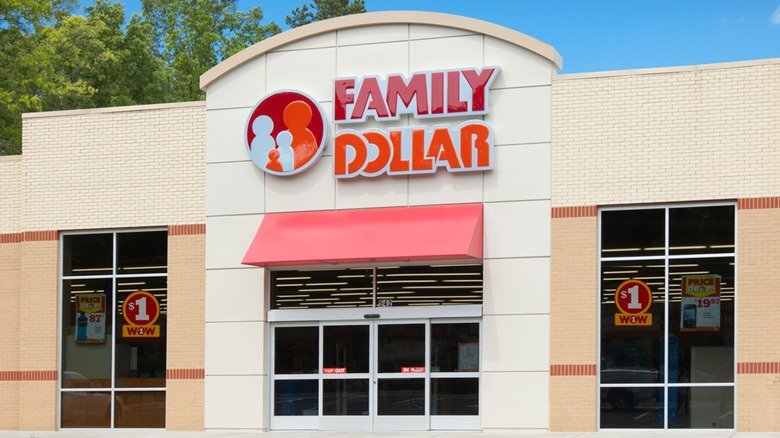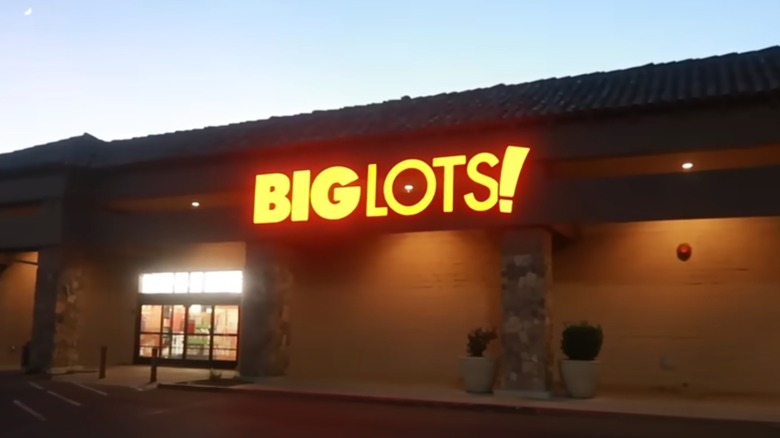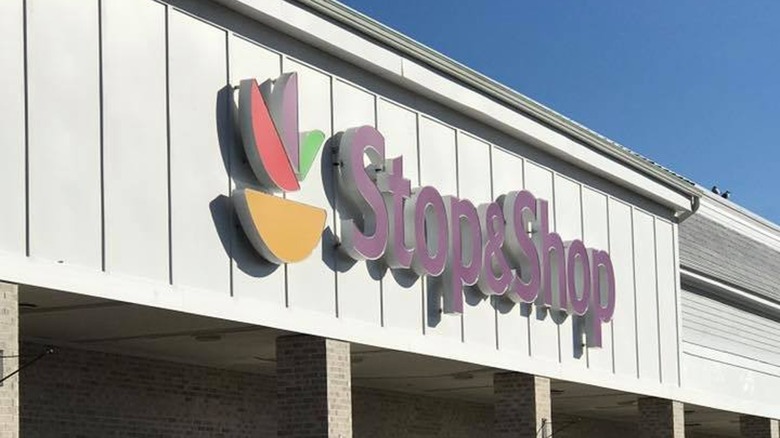Grocery Chains That Could Disappear In 2024
In the current economy, some grocery chains are finding themselves at a crossroads, facing uncertain futures and the possibility of disappearing in 2024. With the prices you see at the grocery store these days, you might have thought that grocery stores are doing well. The ones that have good business models that allow the stores to give you deep discounts without losing profits are doing just fine. However, some grocery store chains never recovered from the money problems they had in 2020 and even earlier. Restructuring debt, restructuring leadership, bankruptcy, and buyouts don't always solve core problems. Plus, competition is stiff with customers looking for the best deals they can find on tight food budgets.
While we hope that the grocery store chains on our list beat the odds, there's a chance that they could still disappear in 2024. Even though some still have hundreds of locations open, others are closer to annihilation, with so few locations left that you can count them on your fingers. Let's take a look at what is happening in the grocery store world and why some companies are struggling more than others.
Albertsons
If you've lived near an Albertsons, you might have noticed more locations closing over the last few years, and that number increased even more as 2024 approached. Albertsons has been around since 1939, when the first store opened in Boise, Idaho. However, as of August 2023, it had $24.11 billion in long-term debt with a debt-to-equity ratio of 10.88 (which isn't good). Plus, its same-store sales continued to slip between many quarters in 2022 and 2023.
As of September 8, 2023, Albertsons merged with Kroger. However, as a part of its merger, it sold 413 stores to C&S. The merger includes a promise not to close the Albertsons locations it didn't sell — at least for now. Name changes are something else entirely. By January 2024, only 379 stores with the Albertsons name still exist in 15 states.
Alaskans have been extremely nervous since its 14 locations were all sold as a part of the merger. Thus, there are no longer any stores called Albertsons in the state. Representatives are urging Alaskans to submit letters to the FTC about their worries concerning local food monopolies charging even more and about needing to move away to find a city with a grocery store.
Balducci's
Since Balducci's is part of the whole Albertsons and Kroger merger, it's also on our list of grocery chains that could disappear in 2024. Balducci's started as a small pushcart business and grew into a specialty gourmet supermarket chain that thrived in New England states for years. In fact, it was the inspiration for other similar businesses that grew up in New York. Unfortunately, its parent company, KB Holdings, went bankrupt in 2020 after struggling for a while. It had already started closing down locations as early as 2009. Optimism abounded when Acme Markets (Albertsons' parent company) swooped in and bought all the remaining Balducci locations in 2020. However, there's less optimism that Balducci's will keep going strong considering what Albertsons looks like in 2024.
Acme Markets didn't do well over the next few years after it acquired Balducci's. The merger between Kroger and Albertsons included Balducci's, but not many of them. Luckily, it only closed one store out of the nine locations that were left. So, as of January 2024, there are only eight Balducci's, with two each in Connecticut, Maryland, New York, and Virginia. Having only eight locations doesn't sound promising for the future of this beloved specialty supermarket chain. With a pound of strawberries costing $10, we're not too hopeful for its future in the face of competition.
Kings Food Markets
Another supermarket we're not sure will survive the Albertsons and Kroger merger is Kings Food Markets. Kings Food Markets was owned by the same company that owned Balducci's and went bankrupt in August of 2020: KB US Holdings. When Albertsons' parent company, Acme Markets, bought Balducci's, it also bought Kings Food Markets.
At the time when Acme Markets bought Kings Food Markets, there were 25 locations. Unfortunately, the change of ownership wasn't helpful, and the new owners closed down one after another. Five closed within just a few months of the bankruptcy auction. Three New Jersey locations started the closing process in December 2020. Two more in New Jersey started the closing process by January 2021. As of January 2024, there are only 19 Kings locations left — one in Connecticut, one in New York, and 17 in New Jersey. Whether they'll survive long under the new Albertsons and Kroger merger has yet to be seen. Like Balducci's, it's selling a pound of strawberries for $10, so our confidence level isn't high.
Safeway
Yet another supermarket that came as a package deal in the Kroger and Albertsons merger is Safeway, which has been in business since 1915. Albertsons gained Safeway back in 2015 for over $9 billion. However, it was forced to sell 146 of the stores to the Haggen chain before the FTC would approve the deal. Haggen ended up going bankrupt and suing Albertsons for $1 billion because it claimed that Albertsons sabotaged the stores it was selling to make them fail. Albertsons bought back some of the remaining Safeways that didn't close.
Prior to the 2023 merger, Safeway had been accused of grossly overcharging some customers in some locations, with related lawsuits in 2008 and 2014. For example, inspectors in Marin, California, found avocados ringing up for $12 instead of $4 to $5 each in 2023. Redditor u/FlipHDSlide says, "Every time I go to Safeway, I have at LEAST 3 items that ring up wrong. I'm starting to think it's not on accident. Imagine how much they are making off of these mistakes on every transaction." With a reputation for overcharging, customers may just go elsewhere, even under different ownership.
Unfortunately, since the merger between Albertsons and Kroger, several locations have already closed. A few locations were already closed in states including California and Washington by January 2024. As of January 2023, there are 917 locations left in 35 states, and we hope we don't see them falter after all these years.
Winn-Dixie
While Winn-Dixie is under new ownership, many are closing for good. Winn-Dixie's parent company, Southeastern Grocers, declared bankruptcy and closed a large number of stores in 2018, so selling the chain to Aldi isn't too surprising. Aldi will finish its acquisition of the remaining Winn-Dixie stores during the first half of 2024. However, that number will dwindle considerably once the merger has been completed. Aldi has already been analyzing each location to see if it will be better for an Aldi rather than a Winn-Dixie. If so, the location will be converted into an Aldi.
Some locations that have already been converted to an Aldi have been met with long lines of customers waiting excitedly for the grand opening. The low prices at Aldi are especially welcome in a decade where food prices continue to rise faster than usual. However, loyal Winn-Dixie customers aren't all thrilled with the idea of their favorite grocery store possibly converting.
Where it seems better to keep the location as a Winn-Dixie, Aldi is committed to continuing to provide a high-quality grocery store. Aldi has never had pharmacies and doesn't want to start with its new acquisitions. So, by the end of 2023, it closed down all its Winn-Dixie pharmacies and transferred the prescriptions. As of December 2023, 546 Winn-Dixie locations remained in Florida, Alabama, Louisiana, Georgia, and Mississippi. The number of Winn-Dixies that survive in the long run remains to be seen.
Harveys Supermarket
While it has been a staple in Georgia and Florida for longer than most people can remember, Harveys Supermarkets are disappearing fast. As of 2024, the chain is almost a century old. Back in 2016, its parent company, Southeastern Grocers, started to rebrand some of its Winn-Dixie stores as Harveys stores, opening 73 of them before its bankruptcy two years later. They weren't doing well, and Aldi swooped in and bought up the remaining Harveys Supermarket stores in 2023. So, there are no guarantees for its future.
Like with its acquisition of Winn-Dixie, Aldi plans to only keep some Harvey Supermarket locations open while converting the others into Aldi stores. It's all about what Aldi thinks will be more profitable in particular locations. At the end of 2023, there were only 25 Harveys Supermarkets left in 18 cities. However, at least four cities in Georgia that had a Harveys Supermarket no longer have one as of January 2024. If the trend continues, there may be very few (if any) left by the end of 2024.
Amazon Go
Amazon Go seemed like a great idea for Amazon, but it may not have been the success that the company envisioned. Not content to only make money in the online arena, Amazon opened cashier-free Amazon Go stores for the public in 2018. The idea was that customers would scan the Amazon Go app or other payment method to be allowed inside. The payment would trigger when customers walked out the door with their groceries, snacks, or prepared meals. However, one customer said that it was like "a bodega crossed with a morgue, or perhaps a vending machine extrapolated into concrete" because of the lack of human interaction (per Fast Company).
Since launching, there have been some transformations. For example, the company launched a larger version called Amazon Go Grocery in 2020 and changed the name of some Amazon Go locations to Amazon Fresh in 2021. For the sake of optimization, it closed eight locations in March 2023, and the numbers have continued to decrease. Not having the luck it wanted in urban areas, the company is considering closing some urban Amazon Go locations in favor of locations in the suburbs. The idea is to target people leaving the city on their way home from work. If that plan doesn't work, Amazon Go just might disappear in 2024. With location numbers continuing to dwindle, there are only 23 left open as of January 2024.
Save-A-Lot
Save-A-Lot was failing for a while, but we're not sure how long it will last after closing or selling all its stores. In 2020, Save-A-Lot found several ways to get rid of over $500 million in debt, including restructuring and closing stores across the U.S. At that time, it had over 1,100 stores. Despite all that work, the grocery store was on our list of grocery stores that might not survive 2022, and we're still not confident about its status in 2024. Coresight Research said that the chain "has struggled in recent years with large debts, frequent leadership changes and increased competition" (via Supermarket News).
Save-A-Lot's parent company, Moran Foods, did more debt refinancing at the beginning of 2023 and started selling off its stores to various companies around the U.S. with an aim to become a wholesale company instead. It sold its final 18 stores in August of 2023 to Leevers Supermarkets, which had previously bought up 29 of the stores. However, some locations closed doors permanently instead. In January 2023, there were over 850 stores. However, as of January 2024, there are only 792 locations still open in 32 states. With fierce competition in the face of high food costs, it may not survive even under different ownership.
Earth Fare
Earth Fare is a Whole Foods competitor that came back from the grave, but may be heading there again. In early 2020, Earth Fare started liquidating its inventory, laid off employees, and filed for bankruptcy. It said that it had difficulty competing in a world where people had changed the way they shopped and preferred e-commerce. At the time, the chain had 50 stores. However, by July, it had a new investor, Hulsing Enterprises, who wanted to work with the founder and previous president to bring the chain back to life.
Under a new leadership team, Earth Fare was happy to be able to hire back some of the people it had previously laid off and reopen some of its store locations that it hadn't sold off to other grocery chains like its competitor Whole Foods. The new COO, David Isinghood, had worked for Whole Foods for 25 years and had plenty of ideas to bring to the table. Unfortunately, the success was short-lived, and it has already closed down some of the stores it re-opened. As of January 2024, it only has 18 stores open in seven states. While we wish the best for it, fresh store closings are concerning.
Family Dollar
People who do a lot of their grocery shopping at Family Dollar may need to find a new place to shop soon. Dollar Tree bought Family Dollar in 2014 for $8.5 billion since it was a big competitor. The store already had declining sales when Dollar Tree bought it. While the company was hopeful it could turn it around, things aren't looking good.
Starting in 2021, about 100 Family Dollar locations started selling a few types of fresh produce, meat, dairy, and frozen food in addition to shelf-stable groceries. This step had the potential to be a positive one for the company. Unfortunately, a rodent contamination debacle at one of its distribution facilities put its reputation on the line in 2022. Family Dollar ended up decreasing its income by 21% between 2022 and 2023. As a result of income decline, Dollar Tree announced in November of 2023 that it would be making some changes. Some Family Dollar stores will close completely, some will move to new locations, and others will rebrand with a different name. With people still associating the name of Family Dollar with rodent feces, the store may need to change its name in order to recover customers. As of December 2023, there were over 8,400 locations open in every U.S. state except Hawaii and Alaska. Around 390 locations closed when it was experiencing losses in 2019. However, we're not sure what the numbers will look like after store closings and renaming this time around.
Big Lots
If Big Lots doesn't do better in the current economy, you may not continue to be able to buy groceries there. As a result of high inflation, fewer people have been buying the non-essentials you'll find in the majority of the stores. Thus, people aren't stopping in for groceries at Big Lots either.
Big Lots' debt has continued to rise more than usual since 2019, and its total debt stood at $2.44 billion as of October 2023. Big Lots released information showing that sales were down 13.2% at the end of November 2023. One of its new strategies has been to start boasting that it has extreme bargains on groceries, with some items costing up to 20% less than at other places.
Big Lots has been in the business of closing down some stores and relocating others. It closed down 50 at the beginning of 2023 and even more as the year progressed, with several still on the chopping block for 2024. As of January 2024, there are over 1,400 locations still open. The idea for the future is to focus on locations in smaller towns where there are fewer shopping options for potential customers. But will customers who can't afford non-essentials like garden whatnots and area rugs think about coming into Big Lots to buy food? If they don't, more and more locations may continue to close unless the economy turns around.
Stop & Shop
Stop & Shop hasn't been performing as well as other Ahold Delhaize grocery stores. In 2022, the company blamed underperformance on remodeling delays during COVID-19. The CFO told Grocery Dive, "If we look at Food Lion several years ago, ... the key to success was, in addition to looking at pricing and culture, you got a different look and feel when you went into the store." These remodels would include more fresh food, pre-made meals, and ethnic offerings.
Stop & Shop has started closing underperforming stores that aren't making enough money for the company. Several locations closed in 2022, with many more following in different states in 2023 and 2024. Sometimes, it has been about local competition, like when the Greenwich, Connecticut, location couldn't compete with a new Wegmans that opened nearby in 2023. Whoever has the most appealing offerings and lowest prices wins. As of January 2024, Stop & Shop has 398 locations in Connecticut, Massachusetts, New Jersey, New York, and Rhode Island.
